7 Expert Tips for Adding a Privacy Fence to Your Yard
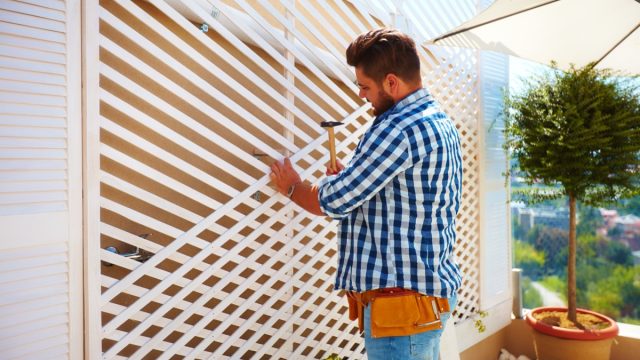
In theory, having a backyard means being able to enjoy the outdoors from the privacy of your own property whenever you want. However, if your neighbors’ home encroaches on your personal space due to a lack of barrier between you, it may suddenly start to feel like you’re living in a fishbowl instead of enjoying your home to the fullest. But building a privacy fence is a great way to reclaim your outdoor oasis—not to mention an opportunity to add new and appealing design features to your garden. Read on to learn experts’ top seven tips for adding a privacy fence to your yard.
RELATED: 5 Tips to Get Your Lawn Ready for Guests.
How to Add a Privacy Fence to Your Yard
1. Experiment with materials.
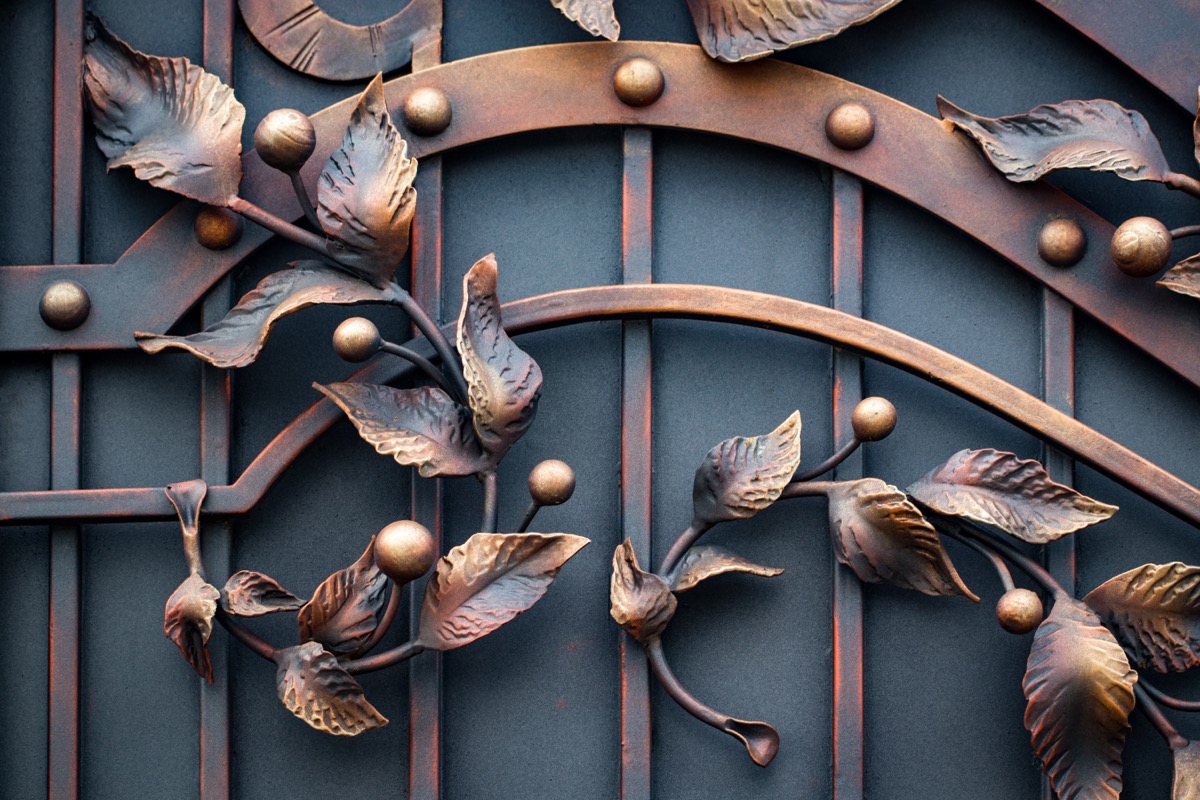
If you opt for a traditional privacy fence, there are many ways to make it your own by experimenting with textures and materials.
“Traditional wooden fences are no longer the only option,” says Roman Smolevskiy, owner of A+ Construction & Remodeling in Sacramento, California. “I have worked on projects where a blend of materials like corrugated metal panels combined with wood added an industrial touch to the landscape, offering both privacy and style.”
Mahmoud Ali Edrinba, owner of the welding website WelderBest, notes that you can add an artistic edge to your privacy fence with welded decorative elements.
“Incorporate intricate metalwork, such as ornamental patterns, scrollwork, or even personalized designs. These welded embellishments can turn your fence into a stunning focal point while maintaining the desired privacy,” Edrinba tells Best Life.
“Consider using durable materials like steel or aluminum to fabricate elegant and modern panels. You can experiment with various designs, patterns, or cut-outs to strike a balance between privacy and visual appeal,” he suggests.
2. Create a “green fence” using trees.
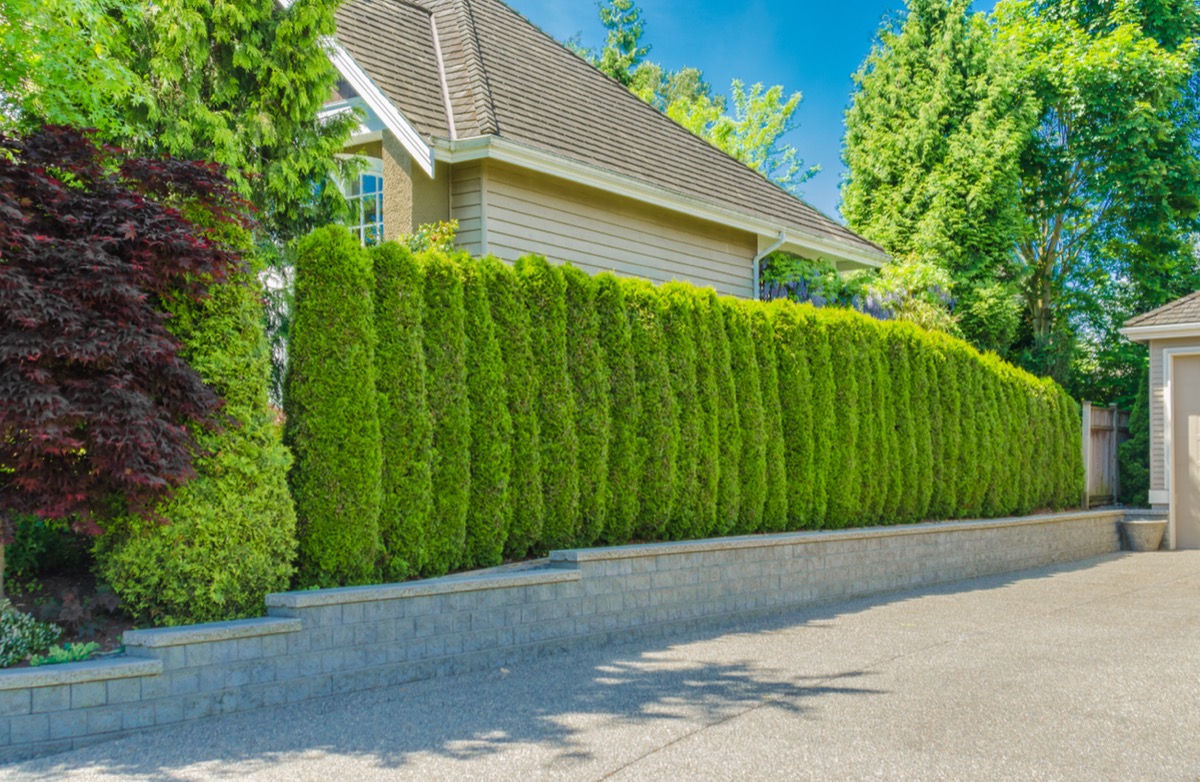
Not all privacy fences require an actual fence. Planting trees can provide many of the same benefits as traditional fences and then some, says Fern Berg, founder of the website Tree Vitalize.
“These tree barriers do more than just provide privacy. They’re excellent windbreakers, keep out noise, and even give local wildlife a place to call home,” she tells Best Life.
Berg suggests choosing either evergreens that stay lush all year round or blooming trees that explode with color in the spring. In particular, she recommends planting arborvitae shrubs “because of their thick, evergreen foliage and fast growth,” and says that holly is another good choice, “with its dense, prickly leaves that can deter unwanted guests.”
Smolevskiy adds that you can mix and match, using traditional fencing and greenery side by side.
“One of my favorite techniques, frequently appreciated by my clients, is to intersperse fence panels with sections of dense greenery or hedgerows. This approach creates a softer, more natural aesthetic while still providing effective privacy,” he says.
RELATED: 5 Things You Should Never Do When Hosting People in Your Backyard.
3. Try a trellis.
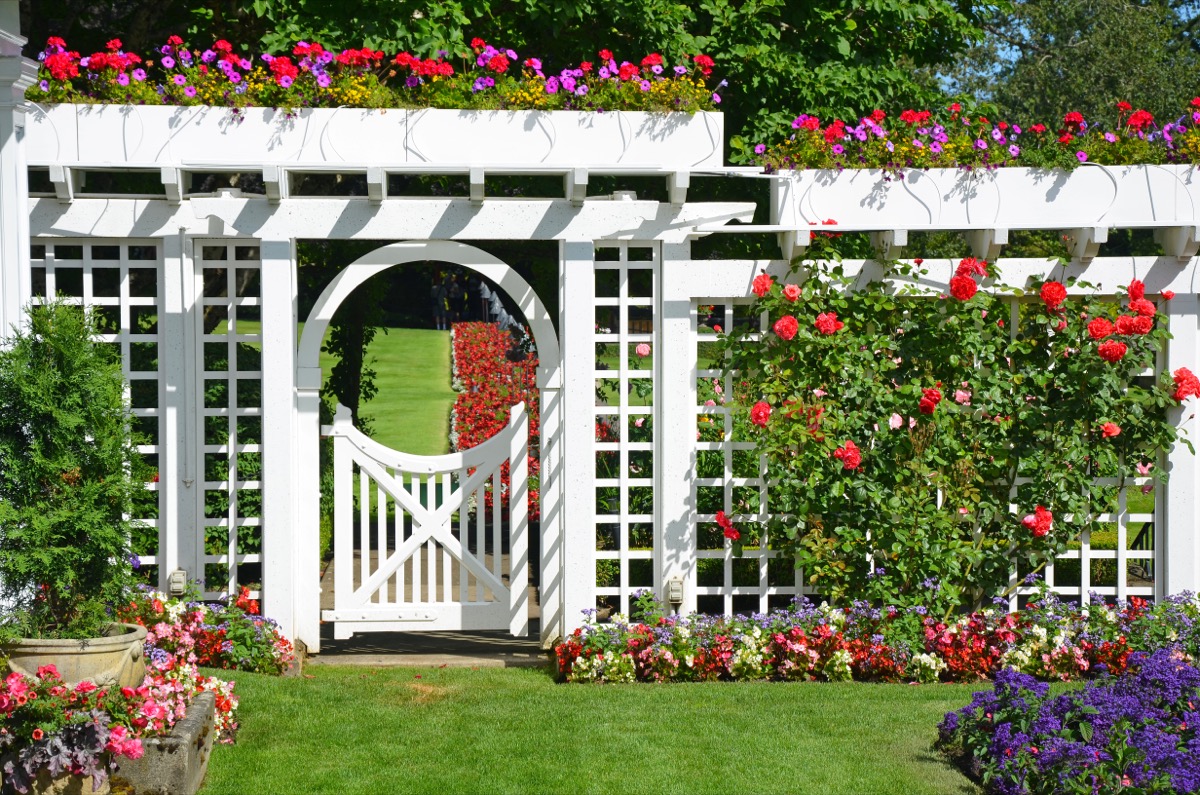
Whether made of wood or metal, fences with trellises are another great option for adding privacy to your backyard. Edrinba notes that they combine functionality and aesthetics, adding a visual barrier of lush greenery.
“Trellises offer both privacy and the opportunity to grow climbing plants, providing a natural and green barrier. The trellis can be customized using welded metal frames, ensuring stability and durability,” says Edrinba.
Smolevskiy agrees that incorporating plants in the form of climbing vines or vertical gardens can add visual appeal. “This solution provides an aesthetically pleasing way to add privacy and can also help in reducing noise,” he says.
4. Be mindful of height and transparency.
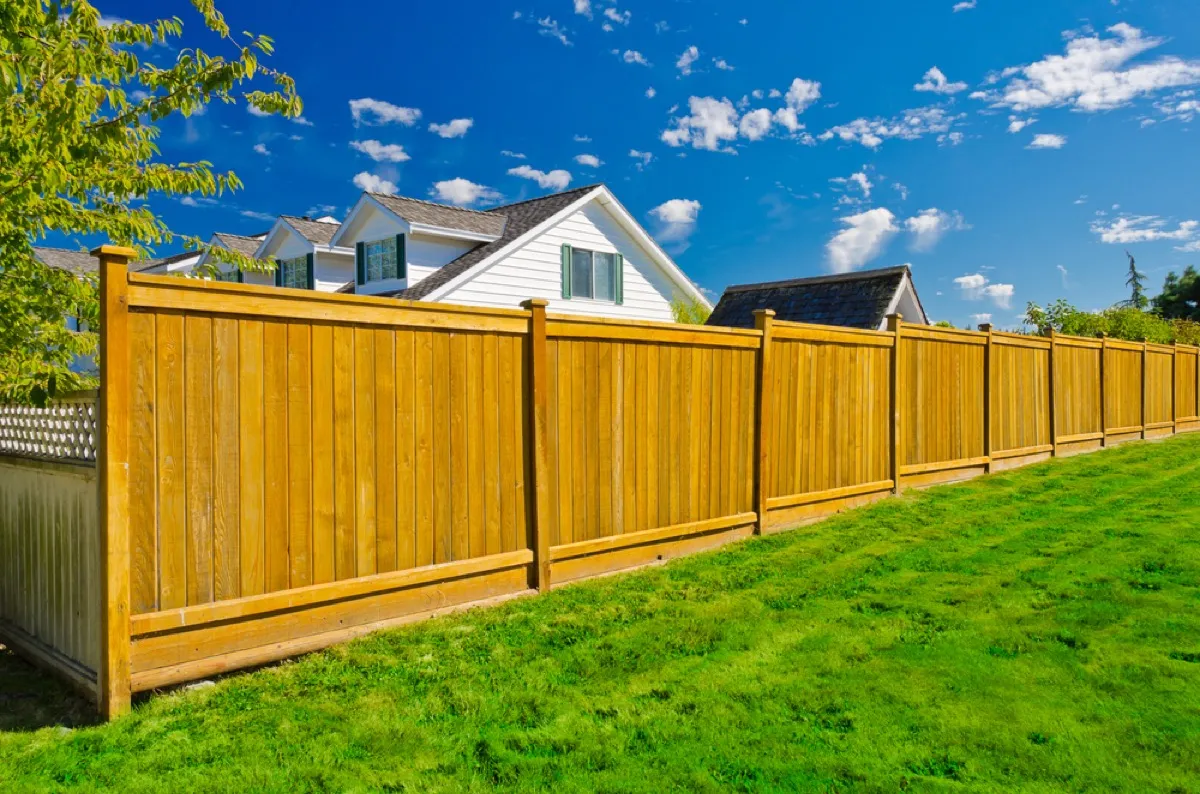
Smolevskiy notes that privacy shouldn’t be the only factor you take into consideration when building a privacy fence. It’s best to think not only about what you stand to gain, but also about what you stand to lose by building a barrier around your yard.
For instance, the contractor says that many people come to regret blocking light with uniformly tall fences.
“One common issue I’ve addressed in many projects is balancing privacy with natural light. A fence with a design that gradually increases in height, or one that incorporates slats with differing levels of transparency, can provide privacy without completely blocking sunlight,” he notes.
According to Bryan Clayton, the CEO of GreenPal and a landscaper with over 22 years of experience in the industry, the standard height for a backyard privacy fence is between six to eight feet. However, he recommends always checking local regulations, as they may have specific height restrictions.
RELATED: 5 Things You’re Doing That Your Neighbors Hate, Realtors Say.
5. Integrate fencing with other outdoor structures.
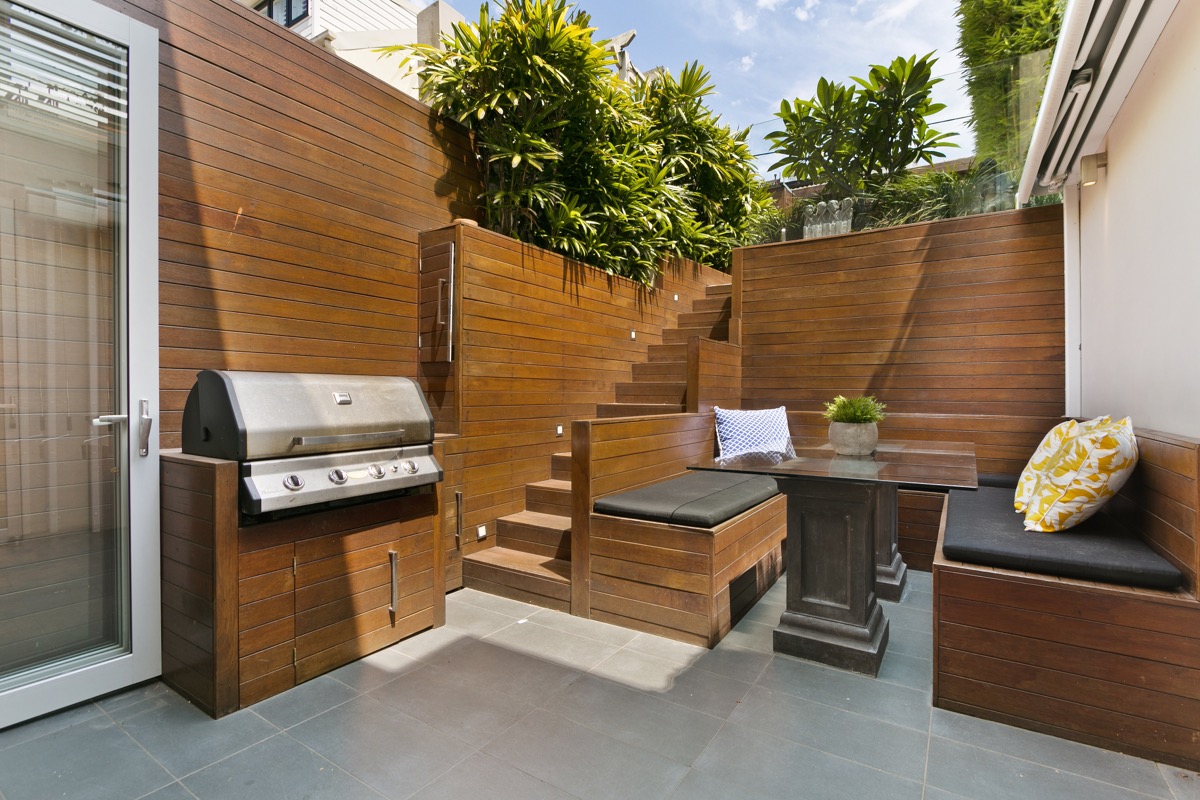
Privacy fences don’t have to feel imposing or out of place—there are ways to integrate them into the broader design scheme of your yard.
“During my tenure as a remodeler, I’ve found that privacy fences don’t necessarily have to stand alone,” says Smolevskiy, who has managed numerous outdoor living space transformations. “They can be creatively integrated with pergolas, gazebos, or outdoor kitchens, creating a seamless transition between different outdoor areas while maintaining privacy.”
6. Let there be light.
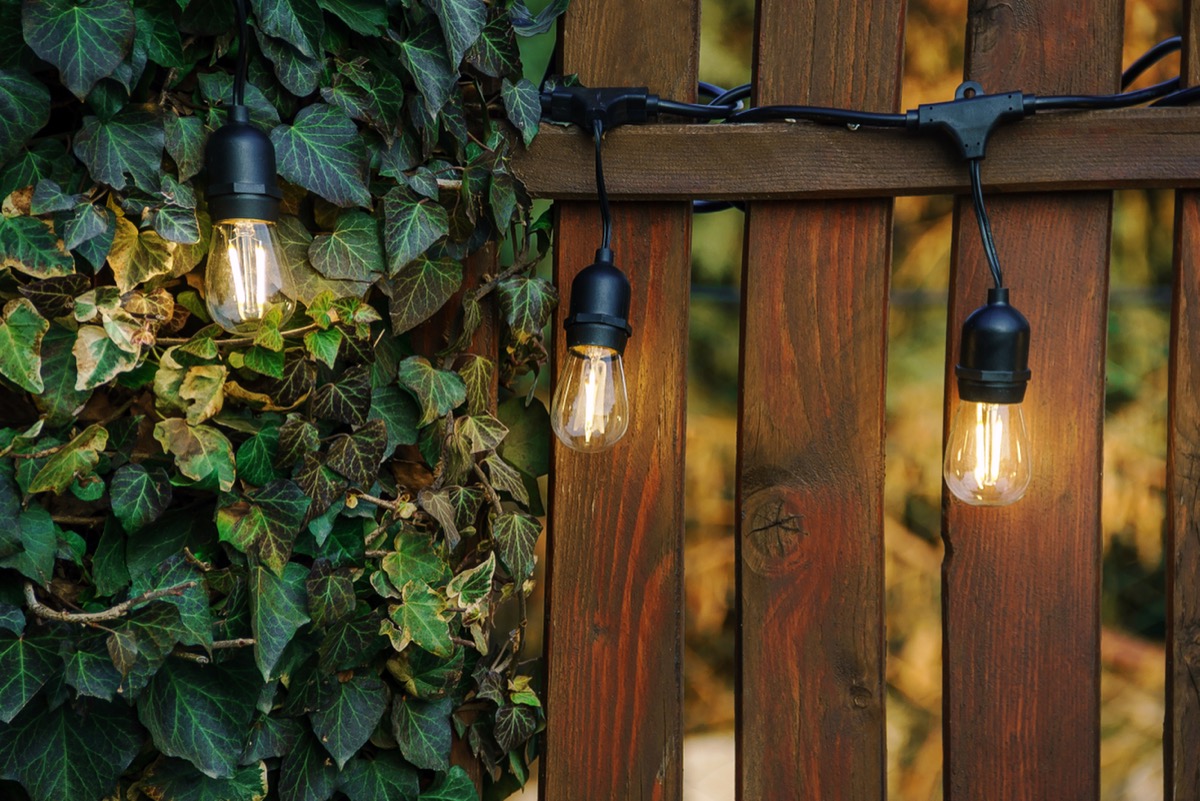
Functionality and privacy are paramount, but Smolevskiy says that done right, your privacy fence will also feel like a design feature. In particular, you can highlight a fence’s beauty and give your yard an ethereal charm by lining your fence with lights.
“In my experience, the right outdoor lighting can enhance a privacy fence’s look after dark,” Smolevskiy says. He adds that the right lighting “provides a sense of security, highlights the fence’s design, and creates a welcoming atmosphere for evening outdoor activities.”
For more home tips sent directly to your inbox, sign up for our daily newsletter.
7. Don’t forget to talk to your neighbors first.
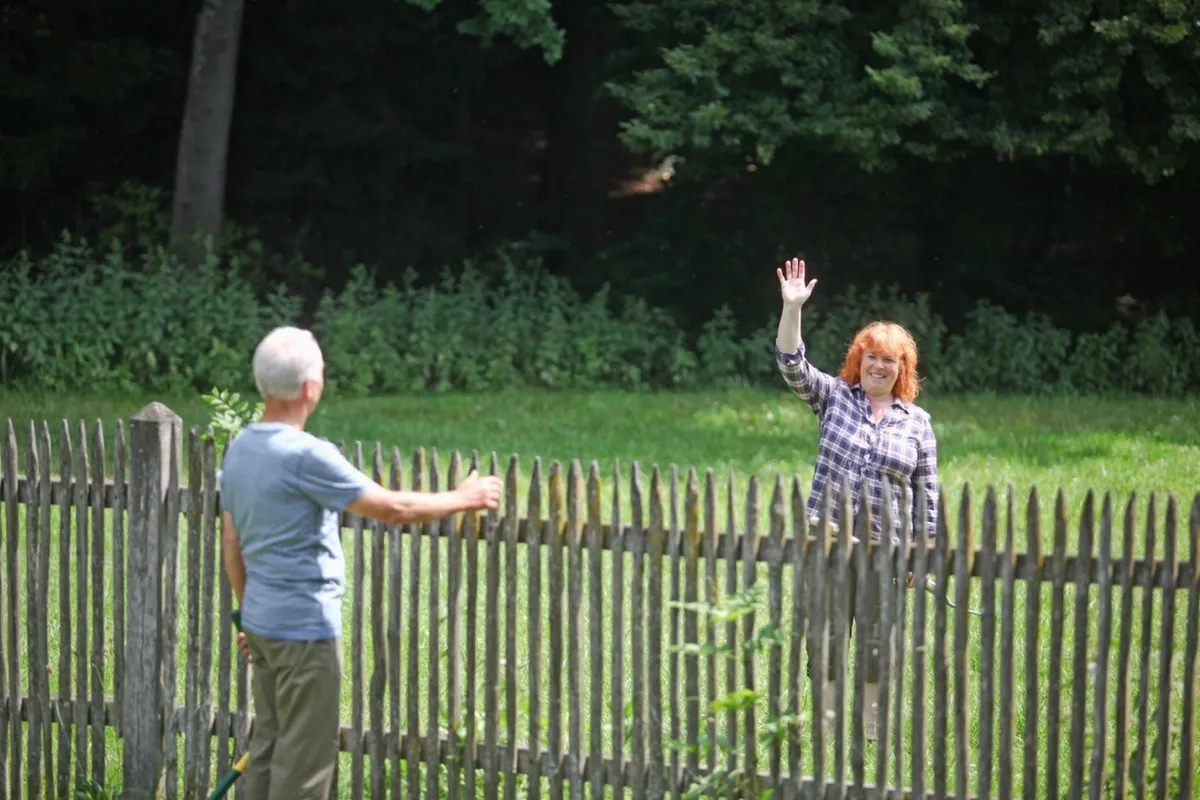
In all of the excitement of building a new backyard feature, some people forget to consult their neighbors first. This can also cause a serious legal dispute if the fence happens to be inches over the property line or obstructs a beloved view.
“If you’re installing a privacy fence, it’s always a good idea to discuss it with your neighbors,” says Clayton. “This can avoid any potential disputes and ensure that your fence installation project goes smoothly.”
However, much of the time, a fence will be a welcome addition that benefits you both. By checking in and sharing the details of your building plans, you’re less likely to face a rift down the road.